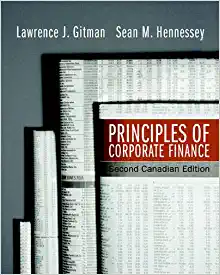Answered step by step
Verified Expert Solution
Question
1 Approved Answer
DISCOUNTING THE MARLBORO MAN* Philip Morris announced early in April, 1993 that it planned to cut the retail price of Marlboro cigarettes by about 40
DISCOUNTING THE MARLBORO MAN* Philip Morris announced early in April, 1993 that it planned to cut the retail price of Marlboro cigarettes by about 40 cents per pack ($4.00 per carton of 10). The average retail price per pack of branded cigarettes is about $2.20 (with differences across states, depending upon state taxes). Of this price, 24 cents is federal taxes; 46 cents is the average of state taxes. Philip Morris is the largest tobacco company, and Marlboro is by far the largest selling brand in America. Its current market share, 22%, exceeds the market share of the four next largest competitors (Winston, Salem, Newport, Doral) combined. However, almost all traditional name-brand cigarettes lost market share in recent years to discount brands. Discount cigarettes were begun in 1981 by a weak competitor, Liggett, which introduced generics. Their instant success, with 3% market share, led Philip Morris major competitor, RJR Nabisco, to get into the act by making branded house brands for major chains of gas, convenience, and discount stores. These discounts sell for up to $1.00 per pack less then branded cigarettes. Manufacturers and retailers can afford to sell so cheaply because the manufacturer gives them little or no advertising support (although retailers advertise them heavily with on-site signs and displays) and use cheaper tobacco. The cheapest brands also bypass traditional cigarette distributors, being sold as house brands through large retailers such as BP gas stations and K-Mart department stores. Even with those cost savings, manufacturer operating profits are only 5 cents per pack -- about one- tenth the profit of the leading advertised brands. Philip Morris entered the discount and house brand business belatedly as a defense. Consequently, while Philip Morris remains the largest tobacco company, it controls a much smaller portion of the discount segment. Its main rival, RJR, controls the largest share of this growing market segment. RJR recently cut the price of its leading discount brand, Monark, in the face of intense competition from smaller competitors (American Tobacco, and Brown & Williamson) that have emphasized the discount segment. In that segment, they often offer cents-off promotions to induce trial and increase market share. The market share of discount brands had risen dramatically, from 7% in 1985 to 11% in 1988 to 30% in 1992. Their biggest increase occurred during the recession in 1991-92. Over the same period, Marlboros market share dropped from nearly 26% of the market in 1987 to 22% in 1992. The brands sales dropped by 5.6% (1.3 market share points) in 1992 alone, the largest single year decline in its history. Philip Morris management, recognizing that they had only a second rate share in the fastest growing segment of the market, felt it necessary to respond with dramatic action. Last autumn, they conducted a four week market test in Portland, Oregon in which a 40 cent price cut resulted in a market share increase of 3% to 4%. SCM580: Class Four Questions & Exercises SCM580: Class Four Questions & Exercises The wholesale price of Marlboro (Philip Morris price to the cigarette distributors) is approximately $13.75 per carton (after cash and volume discounts). (The wholesale price does not include taxes, which are levied at the distributor level.) Of that, only about 75 cents per carton is variable manufacturing cost. Fixed costs are high for all name brand cigarettes. Philip Morris, for example, incurs tremendous costs to advertise the image of the Marlboro man. Because of the brands high market share, however, the company can afford these expenditures and still earn approximately $5.50 per carton in profit. 1. The Pricing Decision Fully analyze and evaluate this decision, as you would a case. If you think that this was a good decision, explain why. If you think it was a poor decision, you must suggest a better alternative. Dont start writing until you think about what the issues are. 500 words more or less. 2. Promotion Philip Morris has not yet fully explained how it intends to cut prices, but the company has indicated that the price cut probably will not involve a simple cut in wholesale prices. Rather it might take the form of consumer promotions. For example, the company has considered selling packages that offer One pack free when customers buy four at the regular price. It also has considered making coupons widely available for 40 cents off per pack, or using promotions in which people send in proof of purchase to get a 40 cent rebate. Another common technique, currently being used by American Tobacco, is to give retailers display allowances for setting up displays that indicate that the cigarettes are selling for 30 cents off regular price. Describe the pros and cons of using these tactics to implement the price cut instead of simply cutting the wholesale price by the same amount. 500 words more or less
Step by Step Solution
There are 3 Steps involved in it
Step: 1

Get Instant Access to Expert-Tailored Solutions
See step-by-step solutions with expert insights and AI powered tools for academic success
Step: 2

Step: 3

Ace Your Homework with AI
Get the answers you need in no time with our AI-driven, step-by-step assistance
Get Started


